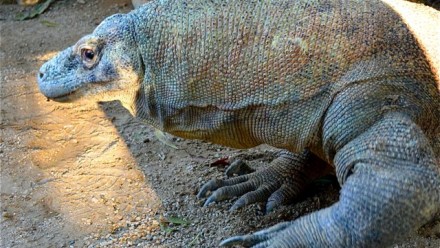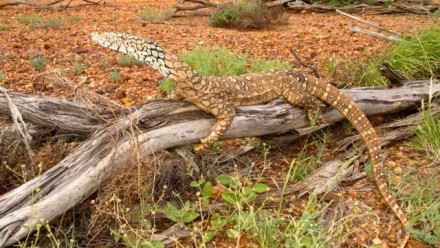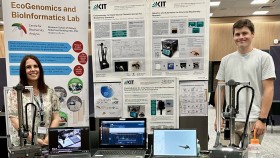Evolution of the Lizard Kings
Gabrielle Openshaw
Can you imagine a world where lizards eat elephants? That world existed just 30,000 years ago.
ANU PhD student Gabi Openshaw is studying the genetic and morphological evolution of the Lizard Kings - the monitors or goannas.
Monitors are an old group, appearing in the fossil record around 65mya. The 70 living species that occur today are found widely in terrestrial, and some arboreal and semiaquatic, habitats across Africa, Asia and Australia.
Monitors have the biggest size range of any terrestrial vertebrate group, with living species ranging in adult length from just 23cm to 3m giants. The largest terrestrial lizard to have ever existed was a monitor. The 9m ‘Megalania’ roamed Australia up until 30,000 thousand years ago meaning these monsters lived alongside people. Other giant monitors from the not-so-distant past lived on Indonesian islands just north of Australia, and are believed to have existed on a diet of pygmy elephants. As if their size, speed, intelligence, and sharply recurved teeth were not formidable enough, many monitors also have venom to assist in bringing down their prey.
Gabi considers that explaining the evolution of biological diversity is one of the most important problems in science. She believes that understanding evolution is not only key to knowing how our own species came to exist, but it also holds the answer to effective conservation of the many fantastic creatures alive today. How are living species related to one another, and why do they look the way they do? Gabi will explore these questions in her PhD using the iconic monitor lizard group.
The first aspect of Gabi's PhD is building an evolutionary tree of living monitors using phylogenomics - using differences in the genes of each species to reveal how closely, or distantly related, they are. Historically, these studies have used just a few genes, however recent technological advances have enabled rapid sequencing of every gene. Around 500 genes will be utilized for every living monitor species, producing the most comprehensive theory of monitor lizard evolution to date.
Using this evolutionary tree as a foundation, Gabi will then integrate body size and head shape analyses to evaluate how the success of monitors relates to their morphology. Both head shape and body size are hugely variable among monitors, reflecting differences in diet and habitat.
The final aspect of Gabi's work is focusing on diversity within ridge-tailed monitors (Varanus acanthurus). Despite being grouped into a single species, individuals vary greatly in colour, body size and habitat use. Preliminary work suggests there are five distinct lineages.












